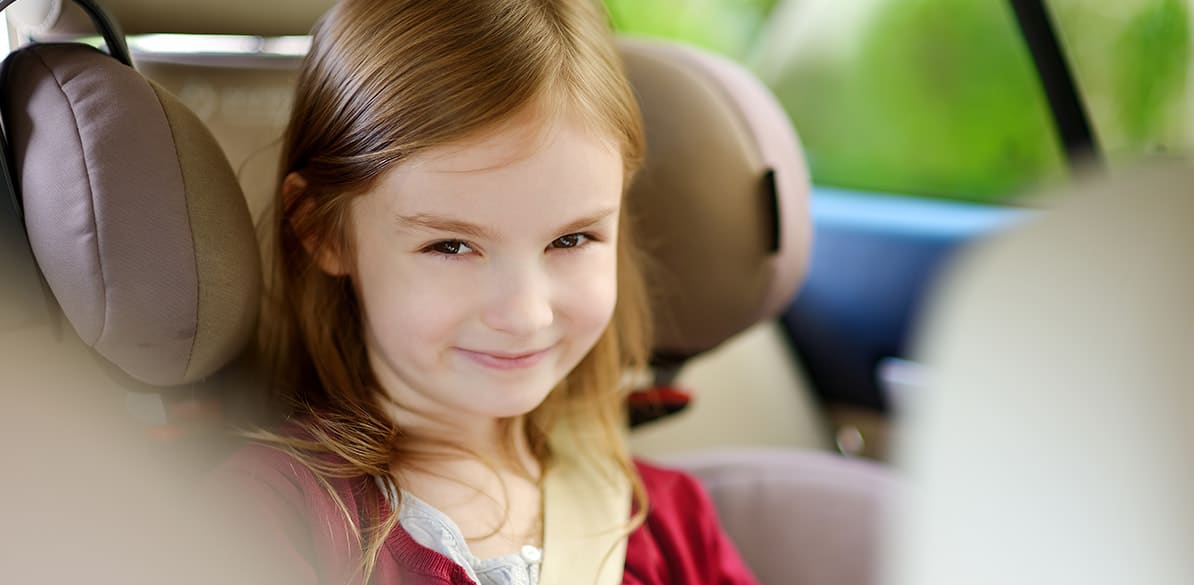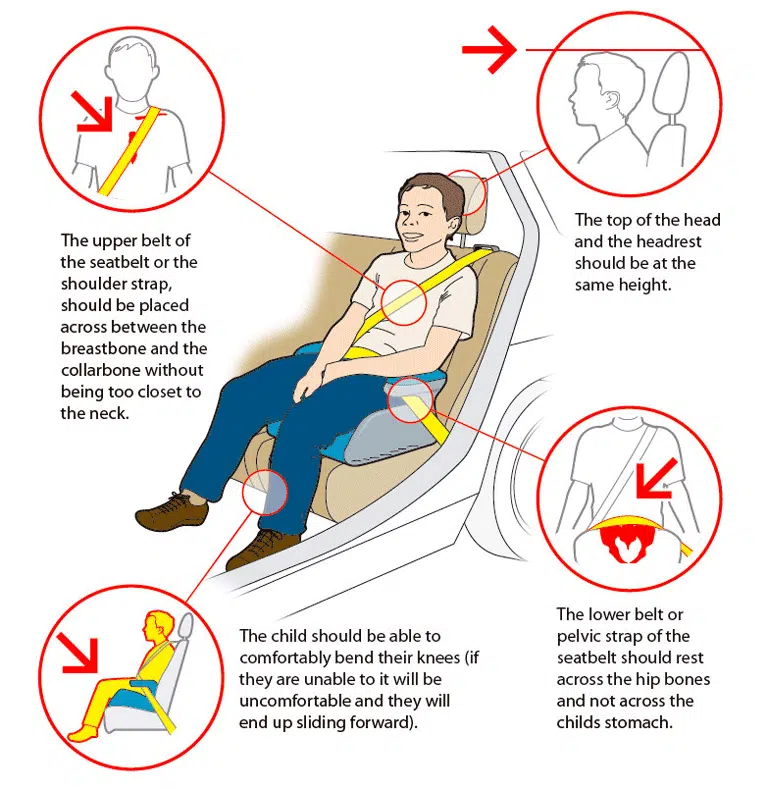Differences between a booster seat and a child seat with a backrest

Has the time come to switch to a booster seat and you do not know whether to choose a booster with or without a backrest? At Fundación MAPFRE we will address the main differences between the two. In the first place, you should bear in mind that the use of a booster seat without a backrest is only recommended from 125 cm upwards. In contrast, a booster seat with a backrest can be used at all times from 15 kg and until the child can directly use the adult seat belt.
The main function of the booster seat is to raise the child so that the seat belt can be correctly fastened. As you can see in the following picture and it should look like this:

From 15 kg in weight, children can use group 2/3 child car seats, which include seat boosters, both with and without backrest. Firstly, you should not change child car seat groups before the the right moment: You should only upgrade to a bigger child restraint system if your child has outgrown his or hers.
In addition, we recommend that children travel facing backwards as long as possible and at least until they are 4 years old.
If the time has come to change to a booster seat, you might ask yourself the following question: with or without a backrest? For us at Fundación MAPFRE the answer is clear: a booster with a backrest provides better protection to the child. Note that the booster seat simply raises the child so that the three-point seat belt can be correctly fastened. The child is not tall enough yet to not need any support system. It is considered that from 150 cm onwards no CRS is necessary, even if regulations only require child seats up to 135 cm. However, the child must continue to use a booster if the shoulder strap touches his or her neck or lies just under his or her chin when fastening the seat belt.
A booster seat with a backrest offers more protection to the child. The child still travels in a car seat with side protection, better ergonomics and, moreover, it avoids mistakes when fastening the seat belt, as the belt has to go through specific slots. The backrest offers greater protection to the hips, back, shoulders and head. It also keeps the child secured to the CRS in the event of an accident, which does not occur with a booster without a backrest. It prevents the child’s head from hitting the window or another part of the vehicle in the event of a collision.
The fact that the headrest can be adjusted according to the child’s height means the belt can also be fastened in the correct position according to his or her height. Hence it correctly crosses over the collar bone and not over the neck. The lap belt must go over the hips and not over the stomach. Booster seats with backrests guarantee these features thanks to their anchors.
Boosters without a backrest or a cushion may be more practical and occupy less space, but they definitely provide less protection.
At Fundación MAPFRE we support the use of booster seats with backrests (2 MB) for greater safety.
Finally, we remind you that the changes made to booster seats only affect their approval, that is, they only impact the car seats’ manufacturers.
